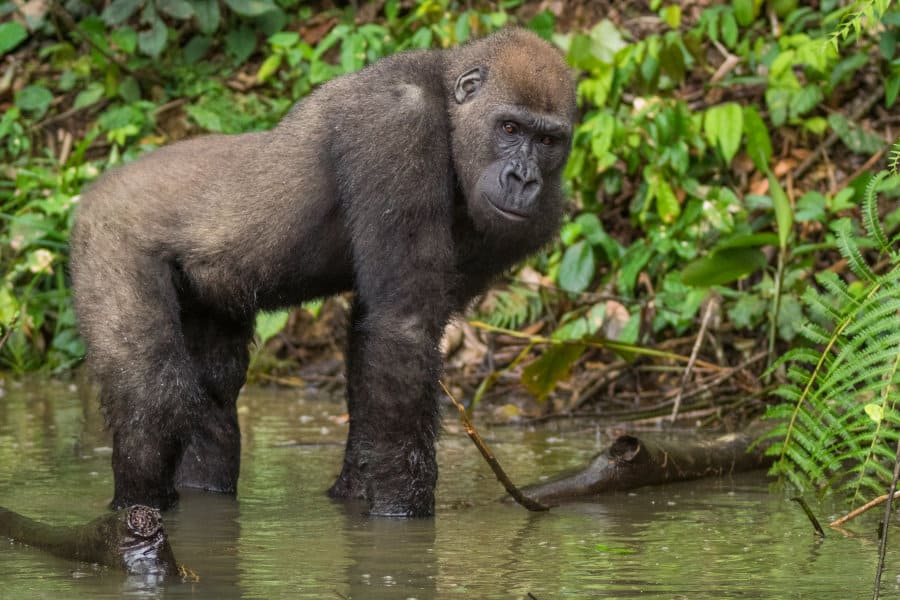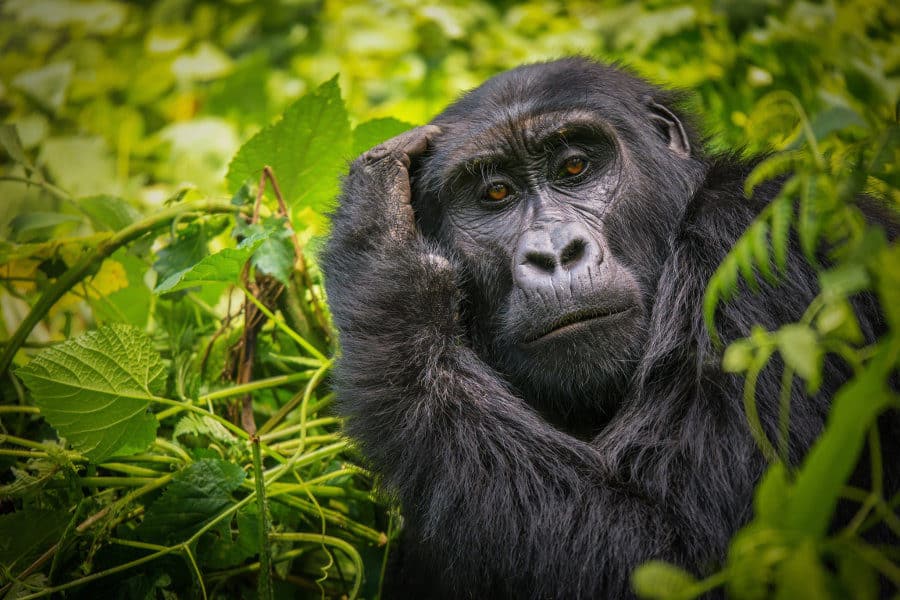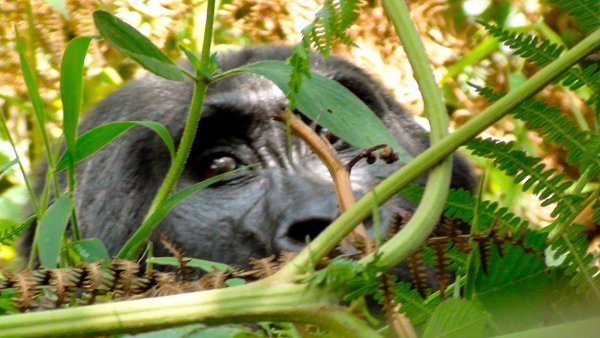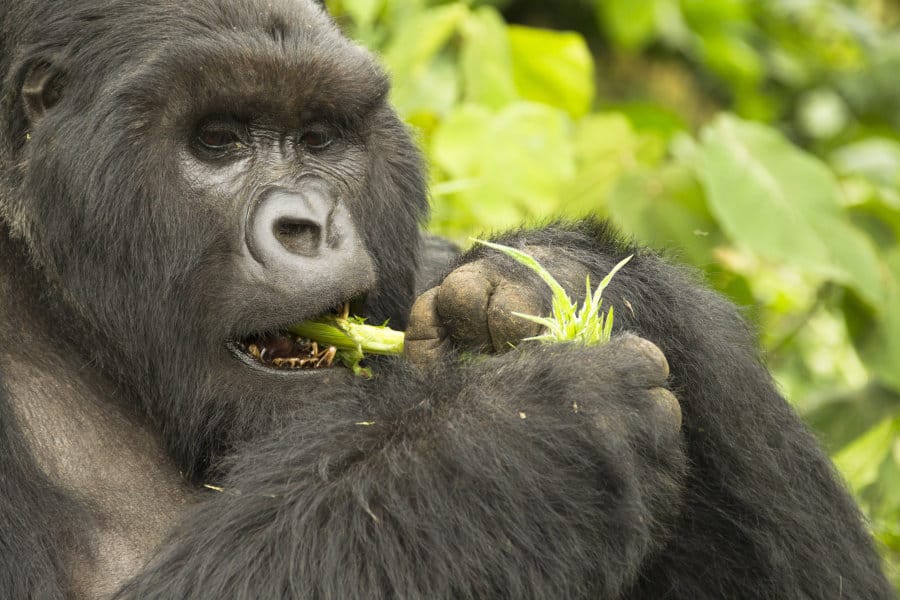Can gorillas swim?
As one of our closest relatives, you might expect these great apes to be at home in the water. Yet, there’s a simple reason you don’t see silverbacks swimming down the river – they can’t!
In fact, humans are the most aquatic – and gorillas probably the least aquatic – of the great apes. The large-bodied gorilla avoids large bodies of water, rarely leaving its leafy domain even to drink.
Why can’t gorillas swim? And what about other apes? After all, most mammals manage a “doggy paddle”, with great apes being an exception.
From evolutionary reasons to body composition, there are a few suggestions. Scientists still aren’t completely sure, though.
Swimming doesn’t come naturally to humans, either. Unlike us, wild gorillas don’t have the luxury of lessons. This raises the question, can gorillas learn to swim?
Read on to find out about these amazing apes and their aversion to water.
Can Gorillas Swim in Water?
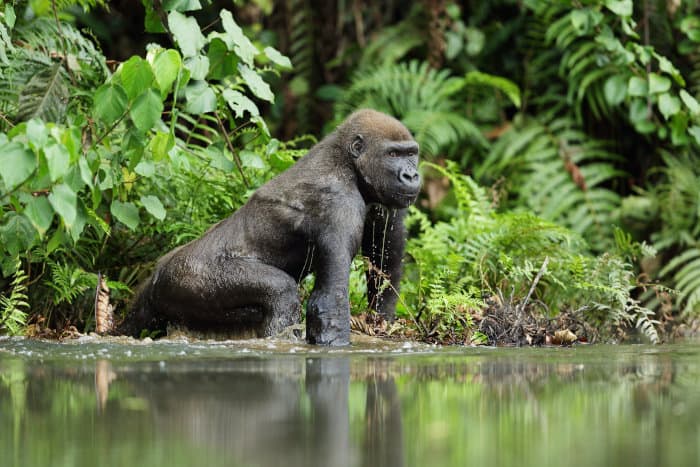
No, gorillas can’t swim in water. (Or any other liquid, come to that.)
There’s a reason many ape enclosures have a moat of water surrounding them. Gorillas have an aversion to deep water and won’t attempt to cross.
In the wild, things are no different. Gorilla expert Dian Fossey stated that mountain gorillas had an “obvious dislike of rain, and they seem to dislike water in general, usually trying to cross streams without getting wet”.
Gorillas, like the other great apes, are not born with an instinctual ability to swim. Large bodies and a dense bone structure would make it difficult, even if they did attempt it.
In their daily lives, gorillas rarely encounter deep water and have evolved to survive without swimming. All signs point to an ape that prefers dry land!
Do gorillas ever go in the water?
While gorillas can’t swim, that doesn’t mean they don’t ever go in the water.
Western lowland gorillas sometimes live in swamp forests. That makes it hard to avoid getting wet, although they stick to the shallows.
Young gorillas also enjoy splashing around in shallow water. This is usually in the dry season, when there’s no danger of infants being washed away.
If gorillas need to cross water, they’ll sometimes wade across on two legs, as long as it isn’t too deep. Some intelligent individuals have even used sticks to gauge depth.
Crossing is usually off the cards when it comes to deep or fast-running water. Gorillas might attempt it if they can climb over obstacles and avoid getting wet. If not, they have no choice but to turn back.
Do gorillas drink water?
Several years ago, gorillas were spotted scooping up and drinking water from a stream for the first time.
Most of the time, gorillas don’t need to drink water.
How is that possible? Their largely plant-based diet has such a high water content, they get all the moisture they need from their food.
Why Can’t Gorillas Swim?

Perhaps the main reason why gorillas can’t swim is that they don’t need to, so they never learned how.
Foraging in the forest doesn’t require a front crawl, so gorillas survived just fine without the ability to swim. And, since they get most of their fluid from plants, they rarely need to go near lakes or rivers.
Gorillas evolved large, heavy bodies with plenty of muscle and not much fat. Their impressive size and strength helps them break up vegetation and allows males to compete for mates.
Gorilla skeletons are much more robust than humans’, with far denser bones.
And while they don’t spend as much time in the trees as other apes, gorillas’ physiology is still suited to climbing, with long, powerful arms and comparatively short legs.
These adaptations have helped gorillas in their daily life – it’s just that swimming isn’t part of that.
Negative buoyancy
Even among humans, there is plenty of variation in buoyancy. Some people find it much harder to float; those that naturally sink in water have “negative buoyancy”.
Gorillas have an even tougher time of it. With their dense bone and muscular bodies, they’re more negatively buoyant than any humans, and there’s no chance of them floating.
Yet, some negatively buoyant animals can still swim with their heads out of water. Even the “armoured” armadillo manages.
Perhaps body shape plays a part. Heavy herbivores can doggy paddle in a similar way to walking, while gorillas’ long arms and short legs don’t lend themselves to an effective swimming stroke.
Can Any Apes Swim?
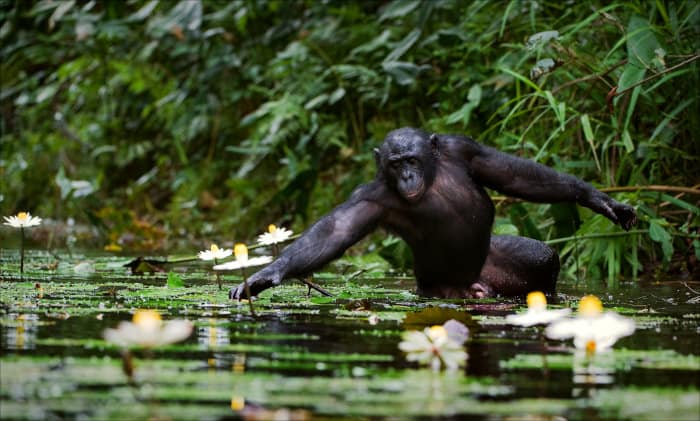
Gorillas aren’t the only primates that avoid water. Their other great ape relatives also prefer dry land.
In fact, the presence of the Congo River is thought to be why chimpanzees and bonobos developed into separate species.
The species’ common ancestor is believed to have lived north of the Congo River. Some of the apes may have crossed the river between one and two million years ago, when it was much shallower than it is today. After the river flooded again, they were stranded on the south side.
The rest of the apes, meanwhile, stayed on the north side.
With both groups being unable to swim, they developed many differences in behaviour and personality. Those who crossed the river evolved into bonobos, and those that stayed evolved into chimps.
Like gorillas, bonobos and chimpanzees can wade through water, though there are no documented cases of wild apes swimming.
Why did apes never learn to swim?
Since they lived in the trees, apes’ ancestors didn’t usually walk on all fours, unlike most other mammals.
Some researchers believe this could be why the doggy paddle comes naturally to these mammals, while apes never learned a proper swimming stroke that mimicked their walking style.
Apes’ ancestors must have found alternative solutions to crossing deep water. They could have crossed via the treetops, jumped, or walked over obstacles like fallen logs.
If there was enough food, then apes wouldn’t have needed to risk a river crossing in the first place.
Can monkeys swim?
Great apes are no great shakes in the water, but what about their smaller relatives?
Not all monkeys can swim, but several species enjoy playing in the water, and some are strong swimmers.
Japanese macaques love lounging in hot springs and can swim half a kilometre. The crab-eating macaque of Southeast Asia goes one step further, diving for its dinner.
Proboscis monkeys live in Borneo’s mangrove forests, so these swamp-dwellers had to adapt to life around water. Aided by their partially webbed fingers and toes, they can also swim underwater.
Can Gorillas Learn to Swim?
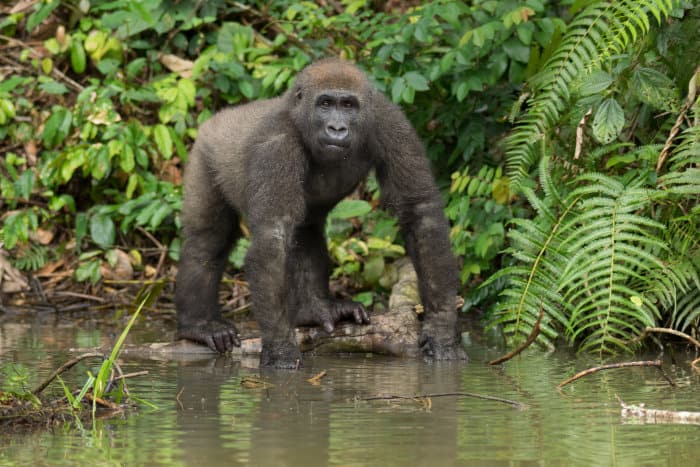
Can gorillas swim naturally? No.
Another interesting question is: “can gorillas learn to swim?”. After all, humans aren’t born with the ability, yet many adults are adept in the water.
In their natural environment, gorillas can survive without swimming, and trying to learn would be dangerous. With the right conditions, though, perhaps a gorilla could improve its swimming abilities.
This has already happened in captivity, albeit with other ape species.
Swimming chimps and orangutans
There are at least two confirmed cases of swimming apes. A chimpanzee named Cooper and an orangutan called Suryia, both raised in captivity, developed swimming skills after spending time in bathtubs and pools.
Researchers Renato and Nicole Bender filmed and observed these apes, documenting their findings in The American Journal of Biological Anthropology.
Cooper, a captive chimp raised in Missouri, grew more confident after the researchers stretched two safety ropes across the pool.
In a matter of days, he learned to dive, tread water, and even swim with a kind of breaststroke.
Suryia the orangutan had a similar swimming style, but kicked with alternate legs, unlike Cooper, who kicked both at once. Suryia could open his eyes underwater and travel several metres while submerged.
Can gorillas be taught to swim?
As of today, there have been no similar studies on gorillas.
Maybe a captive gorilla could do the same, given the right conditions. The larger, heavier ape would likely have a harder time staying afloat, so it’s hard to say either way.
Even if some individual gorillas learned to swim, that doesn’t mean all gorillas would be able to. After all, many humans can’t swim.
Can Gorillas Swim? See for Yourself
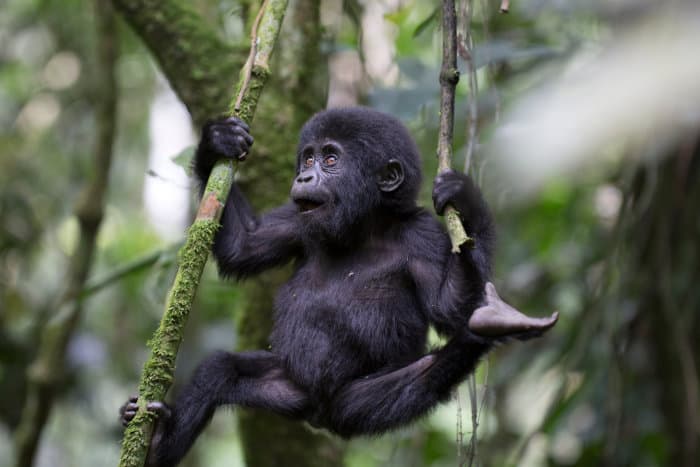
So, can gorillas swim? In a natural setting, the answer is no. Some captive apes have shown an ability to learn, although gorillas are much heavier and might find it harder.
While there’s always the chance of exceptional individuals, it’s fair to say gorillas can’t swim. These powerful primates have adapted to their jungle environment, where their large, robust physiques are more useful than swimming ability.
Some primates became better swimmers because they needed to cross rivers to find food. If gorillas’ habitat shrinks even further, and food becomes scarcer, perhaps they’ll face their fears of water.
If you’d like to see gorillas in the wild, there are many opportunities. Why not start by learning all about gorilla trekking in Uganda and Rwanda?
Just don’t expect to see them swimming!
